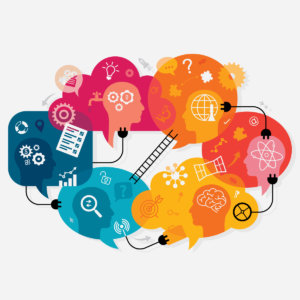Using Digital Communication to Drive Digital Change
It’s tough to have one without the other.
Topics
Leaders trying to get their organizations to adopt new technologies or new ways of thinking tend to kick things off with big, inspirational speeches. “When we’re finished,” they like to say, “we’re going to be the Apple of [insert niche industry here]!” This gets everyone fired up about the change.
And then … silence.
My colleagues and I have seen this happen many times in our consulting work. Communication grinds to a halt until the company’s leaders define the next level of detail in the strategy or reach a massive milestone. Meanwhile, employees wait, wonder, and want to know how they can help. The absence of information leads to doubt, cynicism, and anxiety — which quickly become obstacles to change.
What if, rather than going quiet after kickoff, leaders model the behaviors they want to see by using digital tools to deliver a steady stream of messages to their employees and continually gather and respond to their feedback? It sounds quite basic — and really, it is.
If you’re planning a digital transformation, try the following techniques to embrace the spirit of change and guide your team through the process.
Push Information Out Quickly
A social media company we work with decided to launch a new internal performance-management platform in preparation for a major shift in the business’s compensation model. But HR leaders knew adopting the system could be challenging and emotionally fraught for employees. They also knew it wouldn’t be ready until close to the date when people would need to start using it.
To reduce resistance, the company’s internal communications team crafted a series of emails explaining the new system to everyone: why the organization was switching to it, what skills people would need to learn to use it, and what the change process would be like. The first emails targeted senior managers to prepare them for the rollout and provide guidance on responding to employee questions or concerns that were likely to come up.
The next emails were sent to employees. These messages unpacked the core skills people would need and emphasized how developing those skills (with the organization’s support) would benefit employees not just in their current roles but throughout their careers.






Comment (1)
Kim Harrison
Excellent points in this article, including the essential need not just to listen but to act on employee feedback. It is vital for managers to model the new behaviors and values they are expecting from their staff. Too often managers merely do the telling – but their example is more powerful. As well, research reported by Gallup, and in the Harvard Business Review ("Most managers don't know how to coach people. But they can learn"), has shown most managers don’t have the skills for coaching their employees, so a program of coaching the coaches is needed in such change activities.